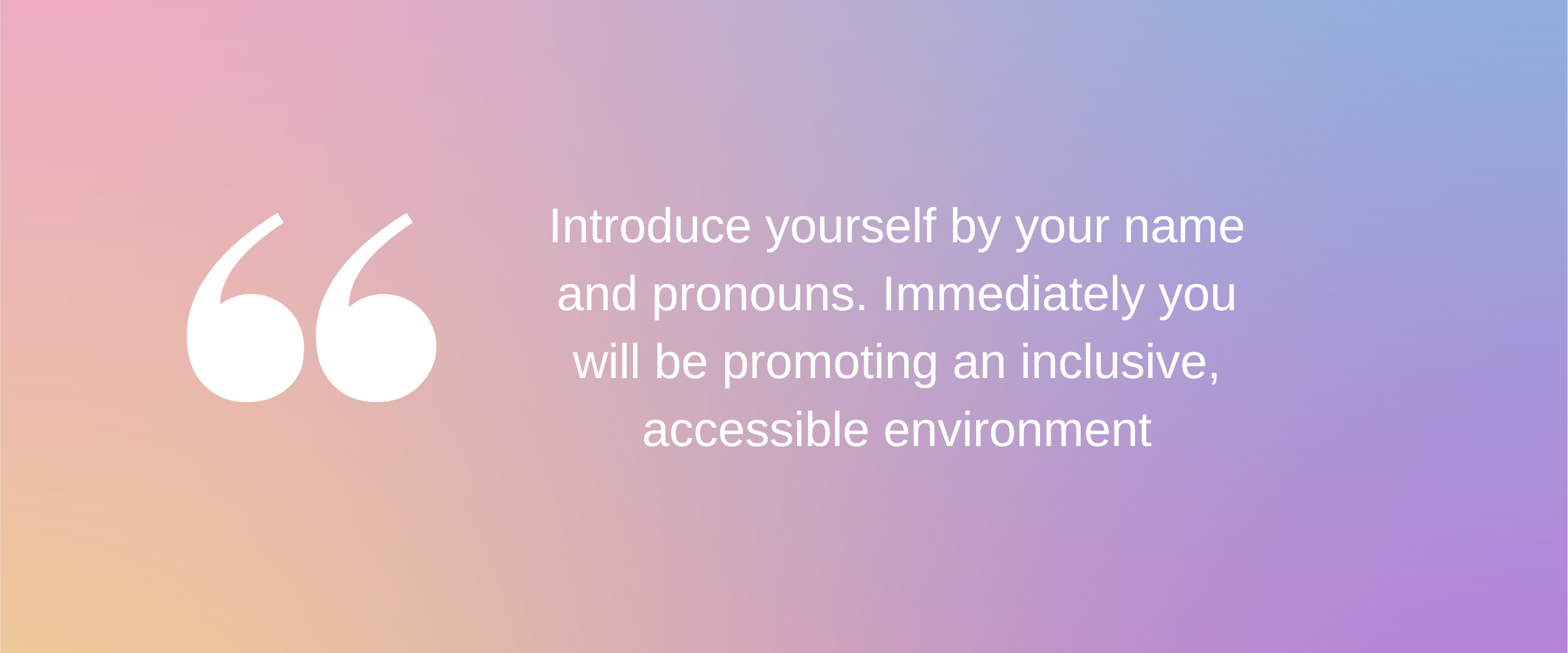Creating a safe, inclusive environment for others should be of paramount importance to us all, especially in spaces where people already feel vulnerable – like the therapy room. The good news is there are several simple actions you can take, starting now
“Hello. I’m Dan, and my pronouns are he/him.” It’s a standard way of introducing myself these days; letting people know what my name is, but also how they can refer to me. But why is that important? And what is a pronoun?
Pronouns are all about how you refer to someone, and how they express their gender identity – such as ‘I/me’, ‘she/her’, ‘he/him’, ‘they/them’. While ‘she/her’ and ‘he/him’ are typically seen as gendered terms, those who are gender non-conforming, or some trans people, may prefer neutral pronouns such as ‘they/them’ (which can be used in the singular). And some people may prefer to be referred to by their name only, rather than using pronouns at all.
You may be used to referring to someone using gendered pronouns, but it’s vital to refer to people who use non-gendered pronouns in the correct way, too. Not everyone resonates with the binary definitions of gender, and it’s important that this is respected.

Indeed, every single person is worthy of dignity and respect, including in the therapy room. Using someone’s correct pronouns, and making an effort to get it right, is a small thing that makes a huge difference. It will reassure LGBTQIA+ people, and trans people in particular, that they are welcome, and in general life, that you are an ally. And this is something that everybody deserves to feel.
Now, it’s OK to feel confused or not quite get it if this is all new to you. However, it’s certainly essential to take the time required to understand this concept and get it right, as a simple way we can all show each other respect and take a step towards making a more inclusive society. And, from a professional perspective, it’s all part of working in an empathetic way while utilising congruence and unconditional positive regard, which is how all therapists should work (whether they are person-centred or not).
Names and pronouns are a personal thing, and the therapy room is a safe space to build rapport and help people to feel at ease. Using the incorrect name or misgendering can genuinely be upsetting or even distressing for a trans person, so getting it right from the outset matters. This means not making any assumptions – a lesson that applies in all walks of life – and asking the correct questions during the initial consultation.
I always recommend that therapists have a question about pronouns and chosen names on their consultation forms. While I’ve been accused of pushing my ideology on to people, that’s not the case. It’s simply about respecting my clients, and anyone who does not feel able to give that respect to their clients should explore why that is. And for those in other workplaces, it could be worth including in introductory HR forms, or encouraging people to add pronouns in email signatures, to allow for clarity and to avoid assumptions.
Having worked with many trans people over the years, I’m all too aware of the challenges they face – including when accessing therapeutic services. Sadly, judgemental and discriminatory people exist, even in medical professions. Some people might have not been referred to using their chosen name, and incorrect pronouns have been used. Some people’s identities have been dismissed, and some therapists have even made it very clear they do not accept trans people. This is obviously completely unacceptable, and unlawful too, and the damage it does can mean some people don't seek further support for years if at all. But be aware that all therapists should be guided by the Equality Act 2010, which protects trans people and others from discrimination based on sexual orientation, race, religion, sex, age, disability, etc.
It can therefore mean that some trans people are very apprehensive when reaching out for support, or attending a consultation with a new therapist. It can be nerve-racking enough without throwing in some of these additional worries. Ultimately, that is why this stuff really matters, and is so important.

So, how do you find out what someone’s pronouns are? The simple thing is to ask, and for therapists, to ask every client. Some people won’t know what you are talking about, but that’s an opportunity to explain it to them. If you provide an intake form that clients complete before seeing you, include the question on your form. You might also want to include a ‘prefer not to say’ option, as of course people have a right to not disclose certain information. Also, some people may not be sure what their pronouns are.
Something else you can do to make others comfortable, and that applies in all aspects of life, is what I did at the start of this article. Introduce yourself by your name and pronouns. Immediately you will be promoting an inclusive, accessible environment.
Whether it’s in the therapy room or beyond, the rule still applies: if you are not sure what someone’s pronouns are, it’s best not to make assumptions. Instead, use the gender-neutral pronouns they/them. They can be used in the singular, and you can’t go wrong by using them.
Taking this further, you may also want to look at how you write letters. If you don’t know the name of the person you are writing to, instead of writing “Dear Sir/Madam”, use “Dear Client” or “To whom it may concern”.
If you have policies, it can also be a good idea to review them, and remove any gendered pronouns, as more often than not, it’s not necessary to use them.
I understand that this feels like a minefield for some people, and mistakes may happen. However, if you make a mistake, own it, apologise, and commit to getting it right next time. Most people will be forgiving to begin with, but do work on getting it right next time. And for therapists, remember that you are responsible for getting it right, not your client.
You should always be guided by the desire to treat others with respect and dignity. All clients deserve that. All humans deserve that. And therapists have a large part to play in delivering that.
To find out more about our counselling services, visit the Counselling Directory or speak to a qualified counsellor.


Comments